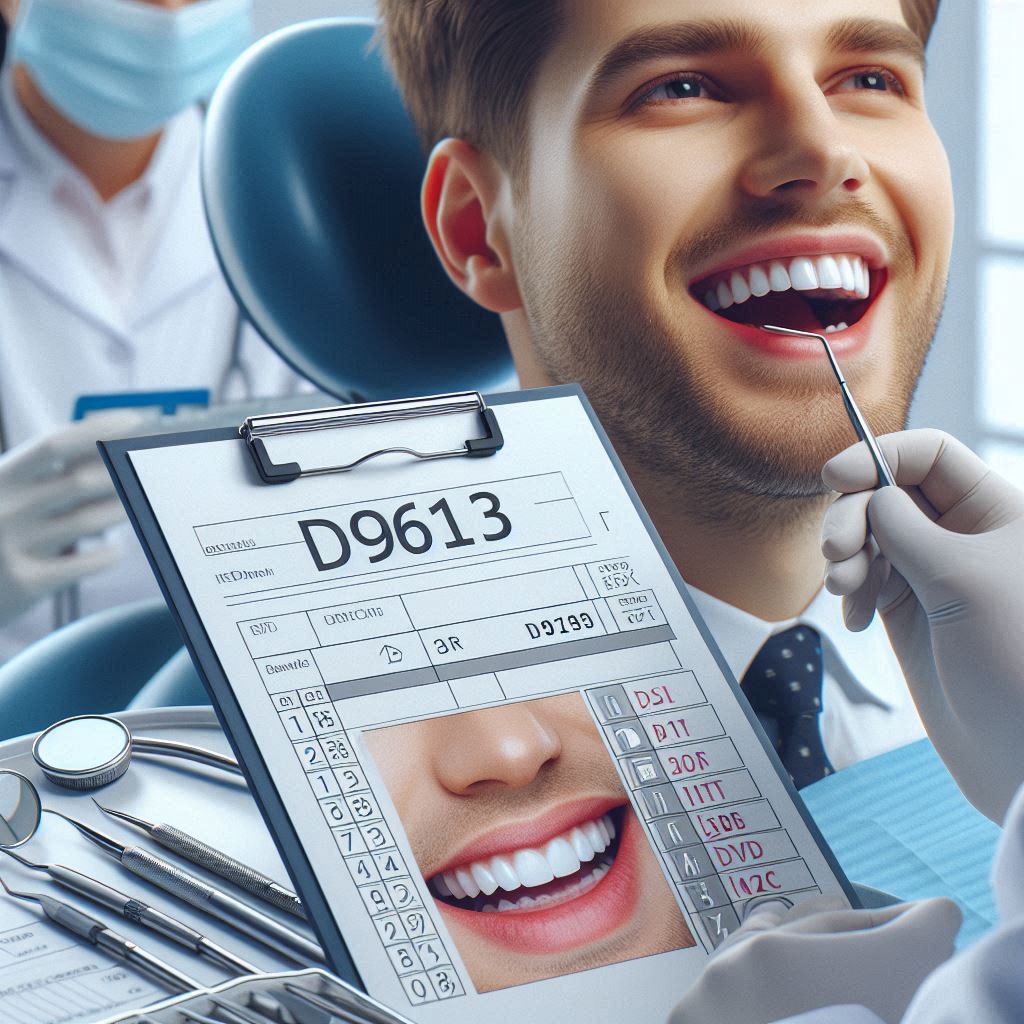D9613 Dental Code: Uses, Billing, and Clinical Applications
1. Introduction to D9613 Dental Code
The D9613 dental code is a crucial component of modern dental billing and treatment documentation. As part of the Current Dental Terminology (CDT) codes maintained by the American Dental Association (ADA), D9613 is used to report specific non-invasive procedures related to drug administration in dental practice.
Unlike surgical or restorative codes, D9613 is often misunderstood, leading to improper billing and claim denials. This guide provides an in-depth, exclusive analysis of D9613, covering its applications, billing nuances, and real-world clinical examples.

2. Understanding the Purpose of D9613
Definition of D9613
According to the ADA CDT 2024 Manual, D9613 is defined as:
“Therapeutic drug injection, by a dentist, single administration.”
This means the code is used when a dentist administers a single-dose therapeutic drug injection (e.g., antibiotics, corticosteroids, or analgesics) to manage pain, infection, or inflammation.
Key Features of D9613
- Single Administration Only (cannot be used for multiple doses in one visit).
- Excludes IV or Sedation Drugs (those fall under different codes like D9248 for IV sedation).
- Must Be Medically Necessary (documentation must justify the need).
3. When is D9613 Used in Dental Practice?
D9613 is commonly applied in scenarios such as:
A. Post-Surgical Pain Management
- After tooth extraction or implant placement, dentists may inject local anesthetics or steroids to reduce swelling.
B. Infection Control
- If a patient has a dental abscess, an antibiotic injection (e.g., penicillin) may be administered before definitive treatment.
C. TMJ and Muscle Pain Relief
- For temporomandibular joint (TMJ) disorders, corticosteroid injections help reduce inflammation.
D. Allergic Reactions
- Emergency use of epinephrine for severe allergic reactions (anaphylaxis) during dental procedures.
4. D9613 vs. Other Dental Codes: Key Differences
| Code | Description | Key Difference |
|---|---|---|
| D9613 | Single therapeutic drug injection | One-time administration |
| D9630 | Medications dispensed for home use | Patient takes medication outside the clinic |
| D9248 | IV sedation | Requires continuous monitoring |
| D9215 | Local anesthesia (injection) | Not coded separately if part of a primary procedure |
Why This Matters: Misusing D9613 (e.g., billing it alongside D9248) can lead to claim denials.
5. Billing and Reimbursement for D9613
Insurance Coverage
- Medicare/Medicaid: Often covers D9613 if medically necessary.
- Private Insurance: Varies by provider; pre-authorization may be required.
Common Denial Reasons & Fixes
| Denial Reason | Solution |
|---|---|
| Lack of medical necessity | Include detailed notes (e.g., “Patient presented with acute infection requiring immediate antibiotic injection”). |
| Incorrect bundling | Ensure D9613 is not billed with a primary procedure unless allowed. |
| Missing documentation | Attach clinical notes and drug dosage details. |
6. Clinical Case Studies Using D9613
Case Study 1: Post-Extraction Pain
- Patient: 45-year-old male with severe pain after molar extraction.
- Treatment: Administered dexamethasone 4mg injection (D9613).
- Outcome: Pain reduced by 80% within 2 hours.
Case Study 2: Abscess Management
- Patient: 30-year-old female with facial swelling.
- Treatment: Penicillin G injection (D9613) before root canal.
- Outcome: Infection controlled, enabling successful RCT.
7. Future Trends in Dental Coding and D9613
- AI-Assisted Coding: Emerging software may help reduce D9613 billing errors.
- Telemedicine Impact: Could D9613 apply to virtual consultations with drug administration? (Unlikely, but evolving.)
8. Conclusion
The D9613 dental code is essential for reporting single-dose therapeutic injections in dentistry. Proper documentation, adherence to billing rules, and understanding its distinctions from other codes are critical for successful reimbursement. By following best practices, dental professionals can optimize patient care and minimize claim denials.
9. Frequently Asked Questions (FAQs)
Q1: Can D9613 be billed with a surgical procedure?
A: Sometimes, but only if the injection is separately identifiable and not part of the standard surgical protocol.
Q2: Does D9613 cover Botox injections?
A: No, Botox falls under D7999 (unspecified medical procedure).
Q3: How often can D9613 be billed per patient?
A: Only once per visit, even if multiple injections are given.


